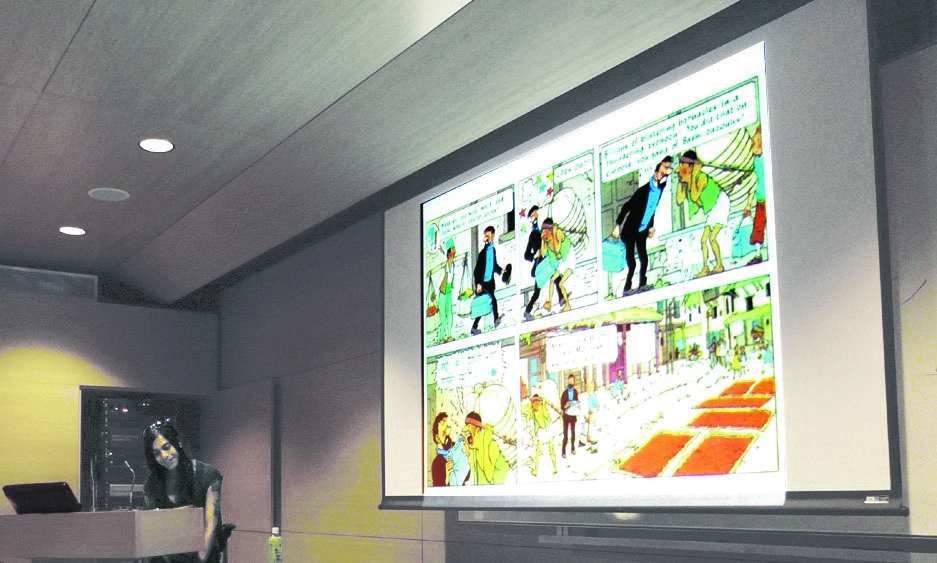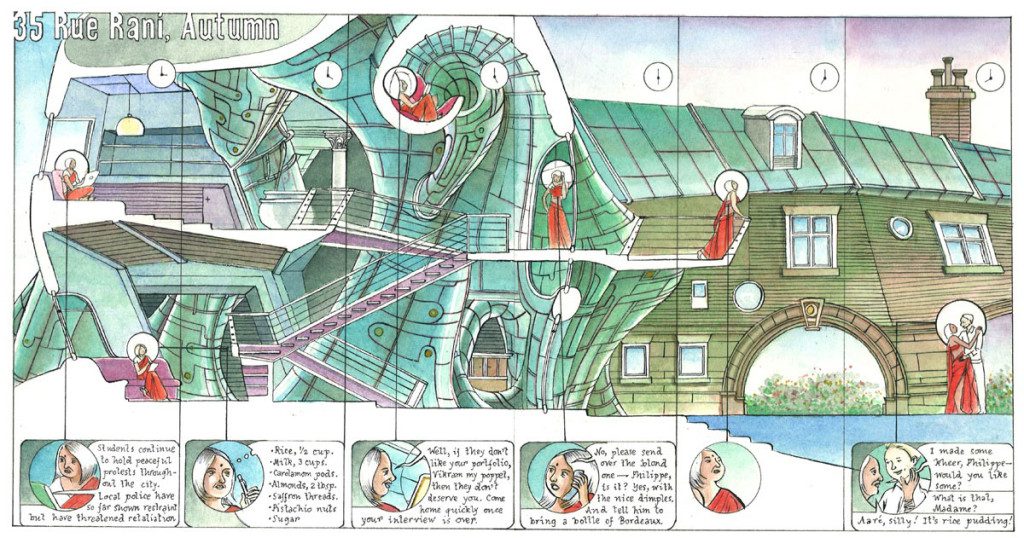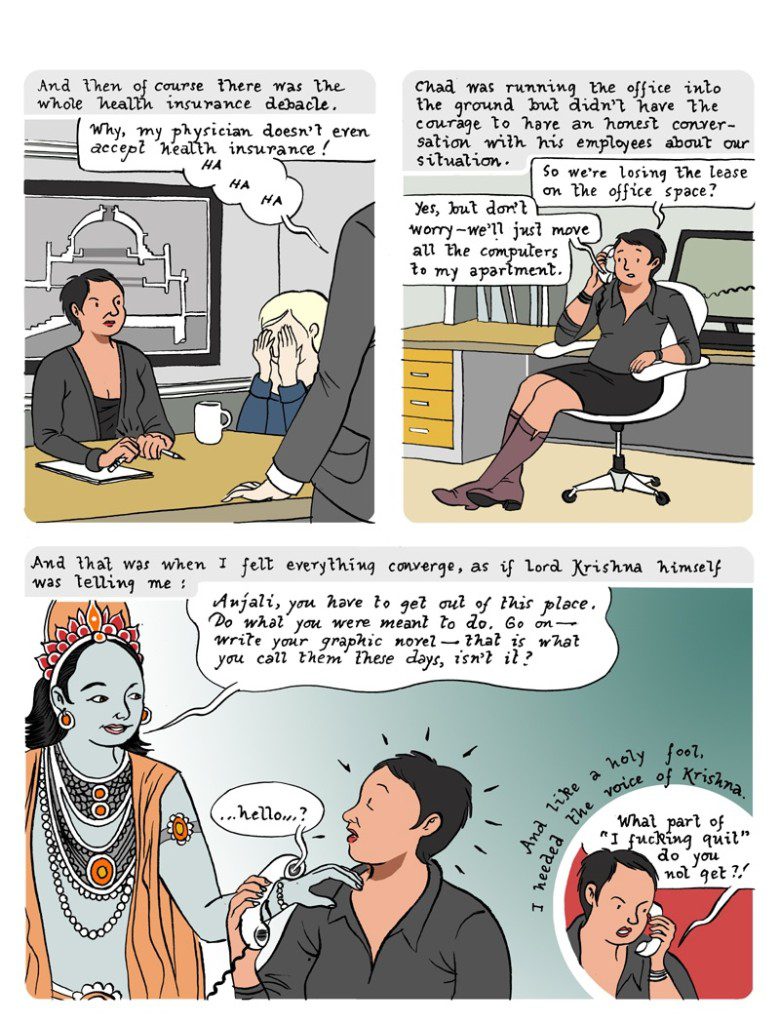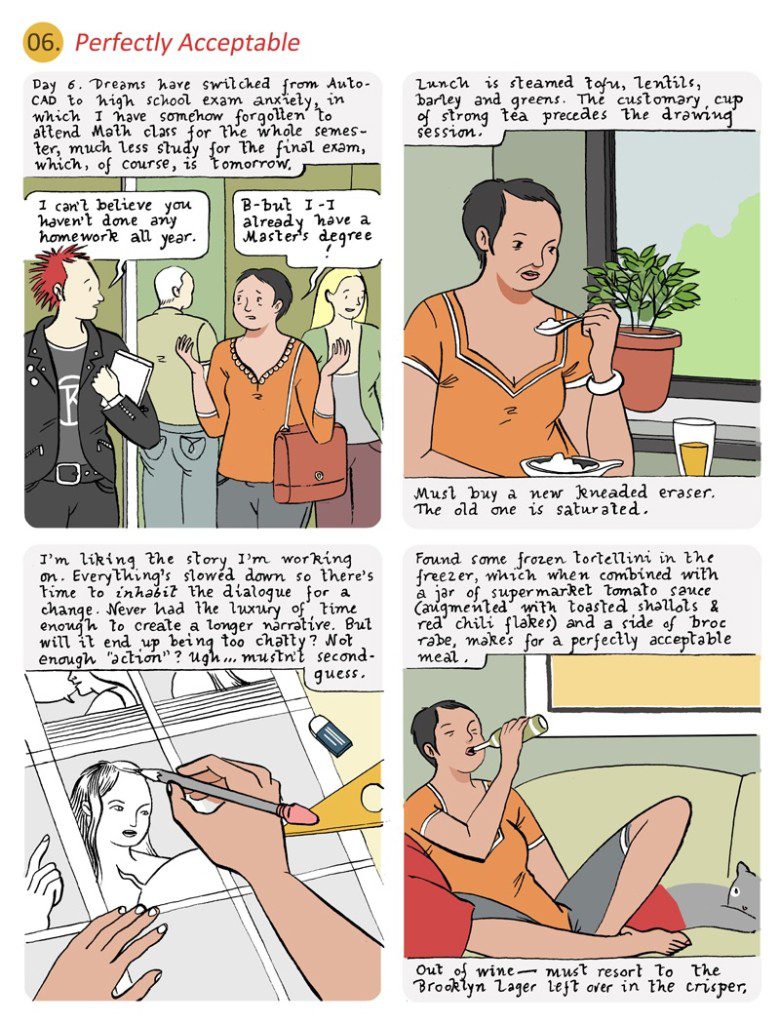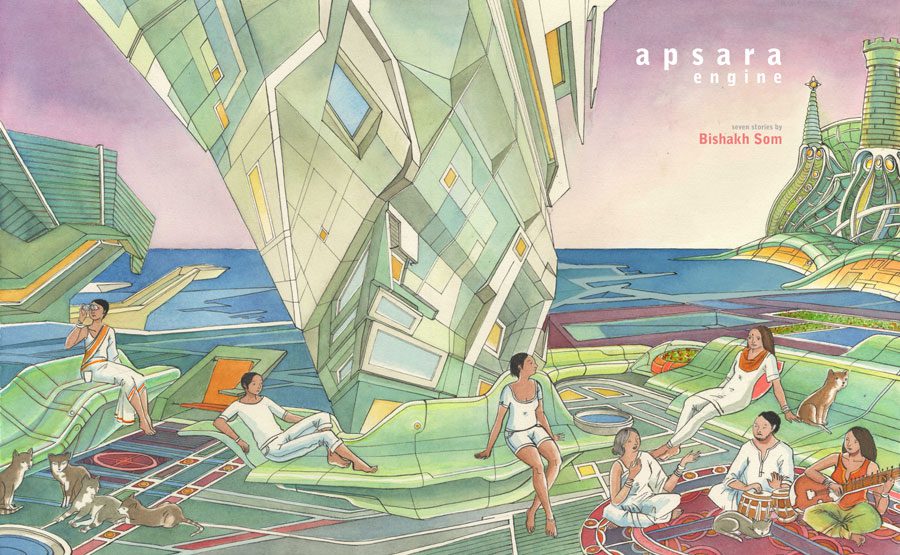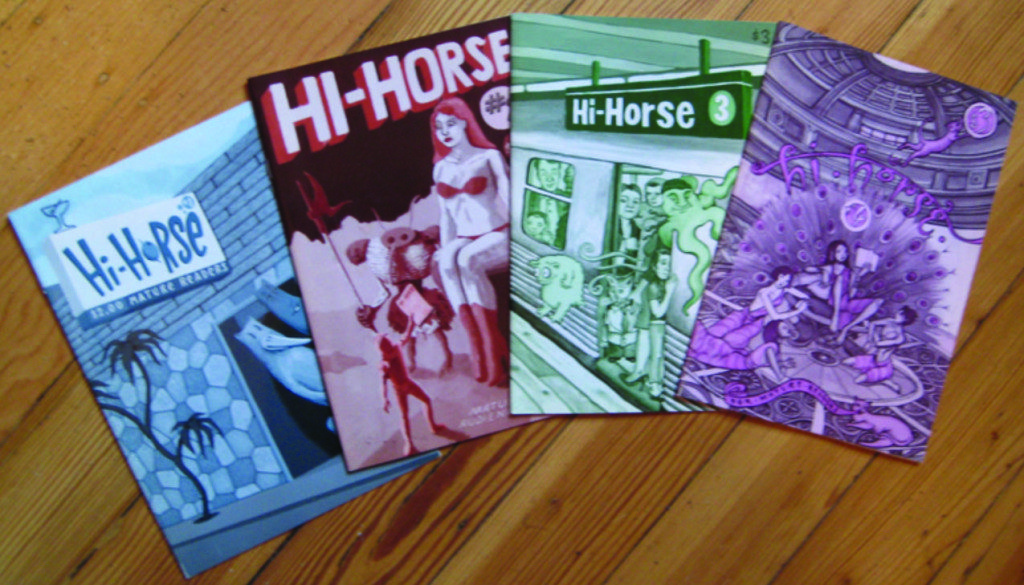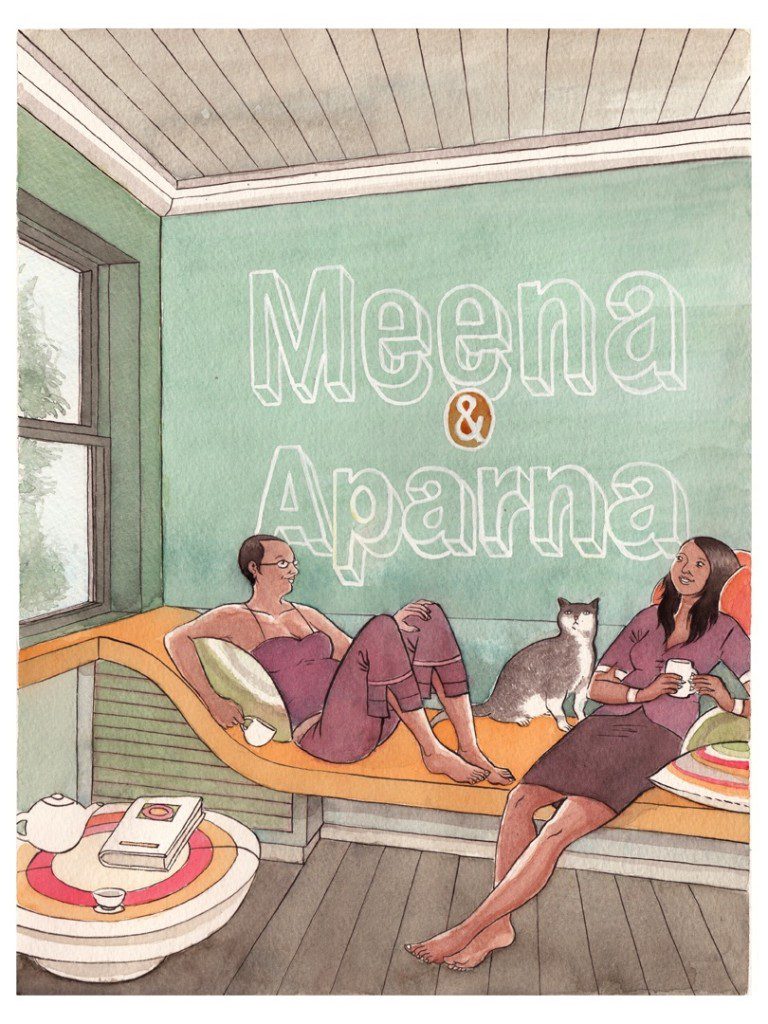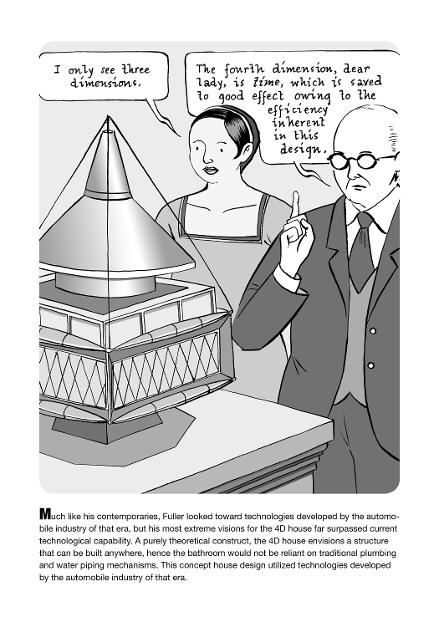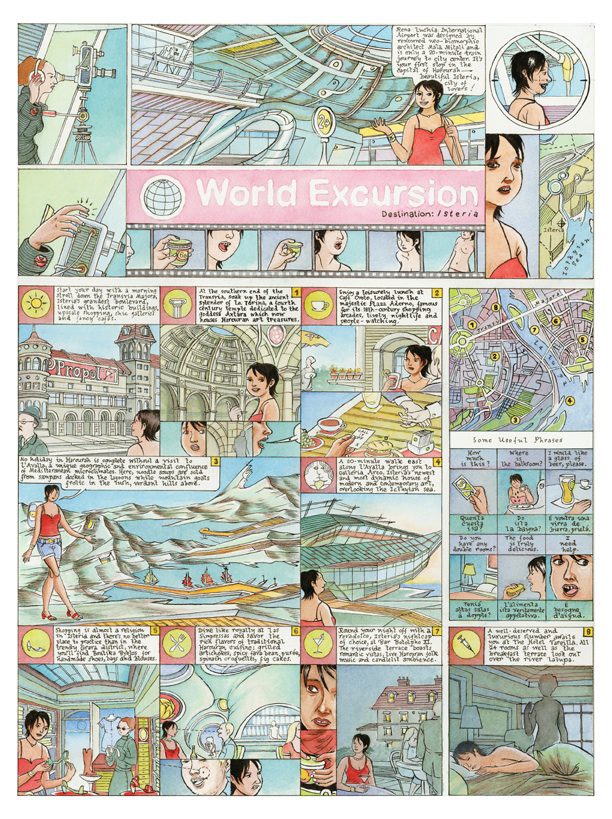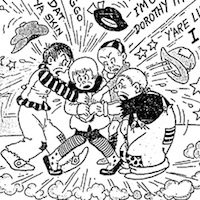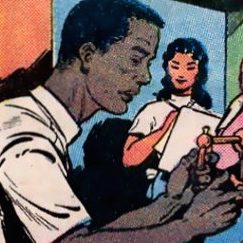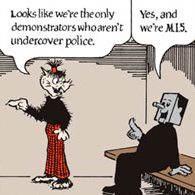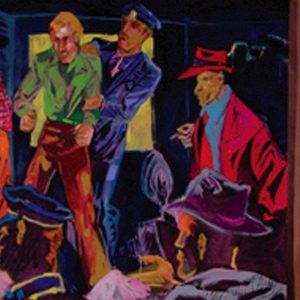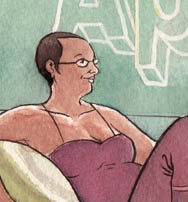
The New York Comics & Picture-Story Symposium is a weekly forum for discussing the tradition and future of text/image work.
Open to the public, it meets Monday nights from 7 to 9 PM EST in New York City. Presentations vary weekly and include everything from historical topics and technical demonstrations to creators presenting their work. Check out upcoming meetings here.
Bishakh Som has been drawing and reading comics all his life. Born in 1968 in Ethiopia, where his U.N.-employed dad was stationed, he grew up on a diet of Tintin, comics inspired by Indian folklore, and practitioners of the “clear line” school of drawing. Archie was very popular with Indian kids, as was the Amar Chitra Katha comics series. Som claims that much of what he knows of Indian culture, history, and folklore, he learned from comics.
Bishakh moved with his parents to New York City in 1974 at the age of six and started making comics with other kids at school as early as the third grade. How to Draw Comics the Marvel Way was an important discovery to which he feels indebted for his figure-drawing education. Later, as an undergrad at Cornell, he created a comics anthology called Strip! with other students, issued roughly once per semester. In his presentation to the Symposium, Som dismissed his contributions to Strip! as “adolescent” and “mood-poem stuff” (he showed a pronounced tendency to be critical of his own work), but it was a significant technical step; it was here that Bishakh first started to ink his drawings.
After graduating, Som entered a graduate program at Harvard to study architecture, originally a way of pleasing his parents, architecture appearing to be the most practical of the arts. He recalls an aim to “grow up and leave comics behind,” and he indeed gave up drawing comics for four years. But drawing remained for him a generative act, and architecture—whether realistic, fanciful, or bizarre—would become one of the key elements in his drawings for the rest of his life.
The late 1980s witnessed an explosion of independent comics, and Jaime Hernandez’s work in Love and Rockets was an essential influence. Som also absorbed Edward Gorey’s cartoons (“I is for Ida who drowned in the lake” was a favorite) and acquired a passion for Aubrey Beardsley. After architecture school, he took a day job in an architectural office in New York. Architectural elements were certainly important in his comics from this period, but the landscape and human figure are paramount. Som then helped form Hi-Horse, a cartoon collective which produced four issues of comics and an anthology, The Hi-Horse Omnibus, published by Alternative Comics, before breaking up in 2003. This was followed by Angel, a collection of both new and reprinted comics all his own, which received a prestigious Xeric grant.
Around this time, Som began to use Photoshop to achieve his rich gray tone palette (a pleasure for Bishakh, who confesses to hating Zip-A-Tone). He also stopped using pens in favor of the brush, which remains his principal drawing instrument to this day, both in his comics work and in a series of stand-alone watercolor paintings, many of which he exhibited at Brooklyn’s ArtLexis gallery in 2010. His next significant work, including “World Excursion,” appeared in the oddly titled collection Pood, a four-issue series done in collaboration with several other cartoonists. Enthusiastically reviewed by the Comics Journal, Pood was published by an imprint of Blurred Books called Big If Comics, co-run by cartoonists Kevin Mutch and Geoff Grogan.
Som’s work up to this point tended mostly toward abbreviated narratives and strange architectural flights of fancy. Around this time, Bishakh left his job at the architectural office to concentrate on completing a longer-form narrative. When published, Apsara Engine will include seven stories, several as long as forty pages, rendered elegantly with flat broad tones of watercolor.
Apsara‘s stories follow the emotional lives of a cast of young contemporary adults, covering an intersection of many cultural and gender identities and life ambitions.
While awaiting publication, Som wanted to keep producing comics but not yet commit to another long narrative. He came up with a series of semi-autobiographical strips. Because Som tells most of the story through the character of a young female alter ego named Anjali, rather than writing a strict autobiography, he invented what the event moderator Adam McGovern called a “displaced memoir,” which, tellingly, made Som feel less self-conscious when presenting the material to others for editorial appraisal.
“She wasn’t exactly me,” Bishakh says of his heroine. The challenge of being a man writing the thoughts of a woman helped Som understand shifting gender roles and what it means to be a family.
Other major challenges of Som’s are technical: one of the stories in Apsara, “Meena and Aparna,” features a conversation over forty pages. Moving a completely conversational scene by shifting points of view ultimately makes the reader feel like he or she is in the conversation and not merely observing from outside the panel.
Indeed, Som doesn’t differentiate figure from background: “The sky is as much a landscape as the landscape is.” They are one common entity. Every individual element, even incidental characters in crowd scenes, is deliberately rendered. The whole page is crucial, and, indeed, Som calls himself “old-fashioned” for using physical paper rather than a computer to construct his stories. For Som, experiencing the story on an iPad is simply not the same as having the printed page which, always, is ideal.
Bishakh Som’s latest work, as yet untitled, is a graphic novel on the history of prefabricated bathrooms, done in collaboration with writer Deborah Schneiderman, due out from McFarland Press in 2014.
His work can be viewed here.
***
About the authors: Mark Lerer holds a bachelor’s degree from Princeton University and an M.F.A. from the New York Academy of Art. His cartoon drawings have been published in The New York Post, and are regularly featured on Facebook. Research Assistant Adam McGovern writes comics and blogs at HiLoBrow.com and Fanchild.
***
Image credits:
1) Bishakh Som speaking at symposium. Photo by John Fullard
2) “Four Scenes,” from Apsara Engine, originally published in SPECS Journal 4, Rollins College, 2011
3) “I Can See It in You,” from Apsara Engine, 2012
4) “Meena & Aparna” from Apsara Engine, 2012
5) “The Whole Health-Care Debacle,” from Anjali, 2013
6) “Day Six” from Anjali, 2013
7) Cover, Apsara Engine, 2012
8) Covers, Hi Horse, issues #1-4
9) Title page, “Meena & Apama,” from Apsara Engine, 2012
10) From An Architectural History of the Prefab Bathroom, McFarland Press, 2014
11) “World Excursion,” from POOD 3, Big If Comics, 2011
12) Title picture

